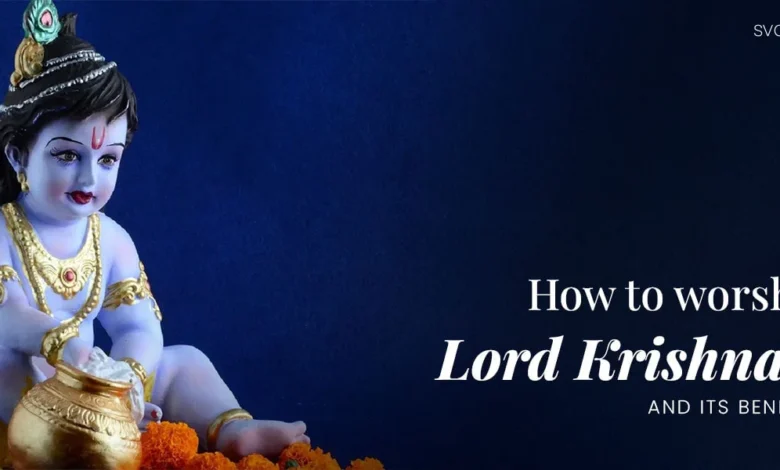The Alluring World of Krishna Images: A Visual Journey into Divine Artistry

Introduction of Krishna Images
Have you ever gazed upon a painting or photograph and felt an instant connection, a sense of peace washing over you? That’s the magic of Krishna images. Whether you are a devout follower, an art enthusiast, or someone curious about cultural symbols, Krishna images have an undeniable charm that captivates all. Let’s dive into this colorful world and discover what makes these depictions of Krishna so enchanting.
The Essence of Krishna in Art
Krishna, a major deity in Hinduism, embodies love, compassion, and joy. His stories and teachings are integral to many Hindu scriptures, making him a beloved figure across India and beyond. Artists over the centuries have sought to capture Krishna’s divine essence in their works, resulting in a diverse array of images that range from traditional to contemporary.
Each Krishna image tells a story. From the playful child stealing butter (known as Makhan Chor) to the divine lover serenading Radha, and the charioteer offering wisdom in the Bhagavad Gita, these images offer a visual narrative that transcends time and culture.
The Playful Child: Bal Krishna
One of the most endearing depictions of Krishna is as a child, known as Bal Krishna. In these images, Krishna is often shown with a mischievous smile, stealing butter or playing with friends. This playful aspect of Krishna’s personality resonates with many, symbolizing innocence and joy. Artists use vibrant colors and dynamic compositions to bring these scenes to life, making them a favorite among families and children.
These images not only depict Krishna’s childhood antics but also convey deeper philosophical themes. The butter represents the sweetness of life, and Krishna’s playful theft symbolizes the divine’s accessibility and approachability. It’s a reminder that divinity can be found in the simplest joys of life.
The Divine Lover: Radha-Krishna
Another popular theme in Krishna imagery is his divine love for Radha. These images are often romantic and poetic, depicting the deep bond between Krishna and Radha. They are shown in idyllic settings, surrounded by nature, with Radha often gazing adoringly at Krishna while he plays his flute.
These images are more than just romantic art; they are a visual representation of divine love. Radha and Krishna’s relationship symbolizes the union of the human soul with the divine. The intricate details and rich colors in these artworks evoke a sense of peace and spiritual longing, making them cherished pieces in many homes and temples.
The Wise Guide: Krishna in the Bhagavad Gita
Krishna’s role as a guide and philosopher is powerfully depicted in images of him with Arjuna on the battlefield of Kurukshetra. These images often show Krishna in his charioteer form, imparting the wisdom of the Bhagavad Gita to a distressed Arjuna.
These portrayals highlight Krishna’s role as a divine teacher and mentor. The imagery of Krishna as a charioteer steering Arjuna’s chariot symbolizes the guidance of the divine in navigating the journey of life. Artists often emphasize the serene and composed demeanor of Krishna, contrasting with Arjuna’s turmoil, to depict the calming and transformative power of spiritual wisdom.
Traditional vs. Contemporary Depictions
Krishna images have evolved over the years, reflecting changes in artistic styles and cultural contexts. Traditional depictions, often found in temples and classical Indian art, adhere to specific iconographic standards. These images are rich in symbolism, with every element—from the peacock feather in Krishna’s crown to the lotus flowers at his feet—holding significant meaning.
In contrast, contemporary artists experiment with new styles and mediums, bringing fresh perspectives to Krishna imagery. Modern Krishna images might blend traditional motifs with abstract elements or depict Krishna in a more stylized, minimalist manner. This fusion of old and new keeps Krishna’s image vibrant and relevant in today’s world, appealing to a broader audience.
The Symbolism in Krishna Images
Krishna images are laden with symbolism, making each detail worth exploring. The blue skin of Krishna represents infinity and the immeasurable nature of the divine. His flute signifies the call of the divine to the human soul, inviting it to transcend worldly attachments and unite with the eternal.
The peacock feather in Krishna’s crown symbolizes beauty and grace, while his yellow dhoti represents the earth. Radha’s presence alongside Krishna signifies the soul’s longing for unity with the divine. Each element in Krishna’s imagery is a visual cue to deeper spiritual truths, inviting viewers to ponder and reflect.
Krishna Images in Daily Life
Krishna images hold a special place in daily life for many people. They are not just decorative pieces but are revered as sacred representations of the divine. These images adorn homes, temples, and public spaces, serving as a constant reminder of Krishna’s presence and teachings.
People often use Krishna images during prayer and meditation, finding solace and inspiration in his divine form. Festivals like Janmashtami, which celebrates Krishna’s birth, see a proliferation of these images, with intricate decorations and vibrant displays that bring the stories of Krishna to life.
The Global Appeal of Krishna Images
Krishna’s appeal extends far beyond the borders of India. His images are cherished by people around the world, transcending cultural and religious boundaries. The universal themes of love, joy, and wisdom embodied in Krishna’s stories resonate with people from diverse backgrounds.
Artists from various cultures have been inspired by Krishna, creating works that blend their own artistic traditions with the iconography of Krishna. This cross-cultural exchange enriches the tapestry of Krishna imagery, making it a truly global phenomenon.
Conclusion: The Enduring Allure of Krishna Images
Krishna images are more than just art; they are windows into the divine. They capture the multifaceted nature of Krishna, from his playful childhood to his profound teachings. Whether traditional or contemporary, these images continue to inspire and uplift, offering a glimpse into the divine joy and wisdom that Krishna represents.
Next time you see a Krishna image, take a moment to appreciate the artistry and symbolism behind it. Let it remind you of the joy, love, and wisdom that Krishna embodies, and how these timeless qualities can enrich your own life. After all, isn’t it incredible how a single image can convey so much meaning and emotion? That’s the true magic of Krishna images.



